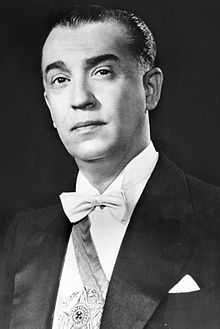Polish Brazilian
|
Notable Polish Brazilians: Filipe Luís Kasmirski • Mauricio Waldman • Xuxa • Jaime Lerner • Alessandra Ambrosio • Juscelino Kubitschek • Serginho Groisman • Francisco Lachowski • Ricardo Lewandowski | |
| Total population | |
|---|---|
|
3 million [1] 2,5% of Brazil's population | |
| Regions with significant populations | |
| Mainly Southern and Southeastern Brazil | |
| Languages | |
| Portuguese, Polish | |
| Religion | |
| Roman Catholicism and Judaism | |
| Related ethnic groups | |
| Polish people, Brazilian people, Austrian Brazilians, German Brazilians, Ukrainian Brazilians, Lithuanian, Czech and other White Brazilians and White Latin Americans |
A Polish Brazilian is a Brazilian person of full or partial Polish ancestry, who is aware of such ancestry and remains connected, in some degree, to Polish culture, or a Polish-born person permanently residing in Brazil. The number of Polish descendants in Brazil is estimated at 3 million.[1][2] Also, a Polish Brazilian can be a child of a Brazilian mother and Polish father (or vice versa).
Polish immigrants began arriving in Brazil in the late 19th century, but their numbers really increased in the 1920s. The Brazilian State of Paraná is a dominantly Polish area in Brazil. The Polish immigrants brought native folk music and dance music to Brazil such as mazurka (in Polish mazurek) and polonaise. In addition to the musical elements of the Polish culture, immigrants also brought customs, manners, and styles of clothing. Polish culture has also had an impact on aspects of the cuisine and architecture of Brazil.
Poles live in Guarapuava, Curitiba, Campo Largo, Contenda, Araucária, Lapa Săo Mateus do Sul, and Irati. With the immigrants there was an increase in employment on planted lands with the use of new tools, like the plow, the grille, and the sickle. There was the introduction of new types of jobs and professions, like blacksmith, carpenter, joiner and tailor. The immigrants work helped a lot on the economic growth in Paraná and renovated Paraná's social structure.
Immigration
The first Polish immigrants arrived in the port of Itajaí, Santa Catarina, in August 1869. They were 78 Poles from the area of Southern Silesia. Commandant Redlisch, of the ship Victoria, brought people from Eastern Europe to settle in Brusque.

They were in total 16 families, among them: Francisco Pollak, Nicolau Wós, Boaventura Pollak, Thomasz Szymanski, Simon Purkot, Felipe Purkot, Miguel Prudlo, Chaim Briffel, Simon Otto, Domin Stempke, Gaspar Gbur, Balcer Gbur, Walentin Weber, Antoni Kania, Franciszek Kania, André Pampuch and Stefan Kachel. The Poles were placed in the colonies Príncipe Dom Pedro and Itajaí, in the area of Brusque.[3]
Fewer Poles immigrated to Brazil than Portuguese or Italians, but many Poles have settled in Brazil. From 1872 to 1959, 110,243 "Russian" citizens entered Brazil. In fact, the vast majority of them were Poles, since Poland was under Russian rule, and ethnic Poles immigrated with Russian passports.[4]
The State of Paraná received the majority of Polish immigrants, who settled mainly in the region of Curitiba, in the towns of Mallet, Cruz Machado, São Matheus do Sul, Irati, and União da Vitória.
| Immigrantes living in Curitiba and outskirts (1878)[5] | |
|---|---|
| Origin | Population |
| Poles | 6.000 |
| Italians | 2.500 |
| Curitiba population (1872) | 12.651 |
Most Polish immigrants to Southern Brazil were Catholics who arrived between 1870–1920 and worked as small farmers in the State of Paraná. Others went to the neighboring states of Rio Grande do Sul and Santa Catarina and São Paulo, which is a state as well as a city. After the 1920s, many Polish Jews immigrated seeking refuge from Europe, settling mainly in the State of São Paulo. Today most Brazilian Jews are of Polish descent.
Religion
In a 1991 poll with Polish immigrants residents in Southeastern Brazil, 48.5% reported to be Jewish, 36.4% Catholic, 10.7% adherents of other religions and 4.5% non-religious.[4]
Polish culture in Brazil
The State of Paraná still retains a strong influence from the Polish culture. Many small towns have a majority of Polish-descendants and the Polish language is spoken by some of them, although nowadays most Polish Brazilians only speak Portuguese. The city of Curitiba has the second largest Polish diaspora in the world (after Chicago) and Polish music, dishes and culture are quite common in the region.
Polish communities

After the proclamation of the Republic, the Brazilian government practically opened the doors of the country to immigration. In the first years of the Republic, the greatest immigration to Brazil occurred. The Polish appeared in the statistics in significant numbers. This period was known in Poland as "Brazilian fever". Important Polish communities appeared in several Brazilian states:
- Paraná: Eufrosina, Rio Claro, São Mateus, Santa Bárbara, Prudentópolis, Ivaí, Apucarana (now Cândido de Abreu), Castro, Piraí do Sul, Palmeira, Cruz Machado, Guarapuava, Irati, Curitiba and others.
- Santa Catarina: Lucena (current Itaiópolis), Rio Vermelho, Massaranduba, Grã-Pará, Nova Galícia, Brusque and others.
- Rio Grande do Sul: Alfredo Chaves (now Veranópolis), Antônio Prado, Bento Gonçalves, Dom Feliciano, Mariana Pimentel, Ijuí, Guaraní das Missões, Áurea, Gaurama, Jaguari, Erechim, and others.
- São Paulo: São Bernardo, Pariquera-açu, City of São Paulo, and others.
- Espírito Santo: Águia Branca, Santa Leopoldina, and others.
See also
Notable Polish Brazilians
- Alessandra Ambrosio, supermodel. She was born in Erechim, Rio Grande do Sul.
- Alexandre Herchcovitch, fashion designer. He is from a Jewish orthodox family, and was born in São Paulo.
- Angélica Ksyvickis, Rede Globo hostess, actress and singer. She was born in Santo André, São Paulo.
- Edson Zwaricz, footballer. He was born in União da Vitória, Paraná.
- Henrique de Curitiba, composer. He was born in Curitiba, Paraná.
- Jaime Lerner, politician. He was born in Curitiba, Paraná.
- Maurício Waldman, environmentalist. He was born in São Paulo.
- Paulo Leminski, poet and writer. He was born in Curitiba, Paraná.
- Paulo Szot, Tony Award-winning opera singer and actor. He was born in São Paulo.
- Xuxa, Rede Globo hostess and Latin Grammy Award-winning singer. She was born in Santa Rosa, Rio Grande do Sul.
- Sergio Groisman, Rede Globo´s "Altas Horas" show host. He was born in São Paulo.
- Francisco Lachowski, model. He was born in Curitiba, Paraná (Polish father)
- Acir Gurgacz, Senator and owner of EUCATUR (a large Brazilian transport company). He was born in Cascavel, Paraná.
- Samuel Klein, founder of Casas Bahia and philanthropist. A Holocaust survivor, Klein emigrated to São Caetano do Sul.
- Juscelino Kubitschek - President of Brazil
- Waldemar Nieclevicz, alpinis. He was born in Foz do Iguaçu, Paraná.
- Ricardo Lewandowski, minister of Brazilian supreme court. He was born in Rio de Janeiro.
- Abraham Kasinski, businessman. He was born in São Paulo.
- Thaís Pacholek, actress. She was born in Curitiba.
- Thiago Rangel Cionek, footballer. He was born in Curitiba.
- Filipe Luís Kasmirski, footballer. He was born in Jaraguá do Sul, Santa Catarina.
- Leandro Narloch, journalist and writer. He was born in Curitiba, paraná state.
- Teori Zavascki / Zawadzki,minister of Brazilian supreme court. He was born in Santa Catarina
References
- ↑ 1.0 1.1 "Polonia w liczbach: Polska Diaspora na świecie (dane szacunkowe 2007)" (in Polish). Wspólnota Polska. Archived from the original on 21 December 2012. Retrieved 18 March 2013.
- ↑ Świat Polonii
- ↑ Brazil
- ↑ 4.0 4.1 Uma história oculta: a imigração dos países da Europa do Centro-Leste para o Brasil
- ↑ {{http://www.revistas.usp.br/ceru/article/viewFile/56989/59985}}
| ||||||||||||||||||||||||||||||||||||||||||||||||||||||||||||||||||||||||||||||||
| ||||||||||||||||||||||||||||||||||||||
| ||||||||||||||||||||||






_cropped.jpg)



